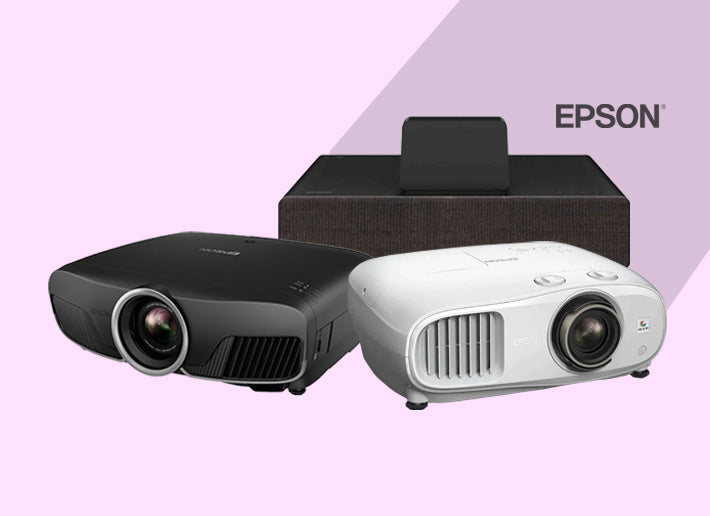Preserving the pristine sound and visual quality of your AV system isn't just about protecting an investment—it's about ensuring every movie night and music session reaches its full potential
Ah, movie night! The lights dim, the surround sound kicks in and you're ready to be transported to another world. But wait—is that a smudge on your screen? And why does the audio sound a bit...off?
Welcome to the not-so-glamorous side of home theatre ownership! Let's face it, we love our entertainment. From cricket matches to the latest movie blockbusters, our home theatres work overtime. But here's the thing: just like how your mum nags you to clean your room, your home theatre setup needs some care too.
You wouldn't drive your car for years without an oil change, so why treat your home theatre any differently? Regular maintenance isn't just about keeping things spick and span, it's also about preserving sound and picture clarity and ensuring your system doesn't konk out during the climax of a nail-biting finale. From tackling dusty screens to dealing with humidity, we'll walk you through the ins and outs of home theatre maintenance.
Screen Queen: Giving Your Display the Royal Treatment
Let’s start with that window to your entertainment world – the screen! Whether you're rocking a swanky 8K TV or a projector setup that would make multiplexes jealous, keeping your display clean is key to crystal-clear visuals.
- Avoid harsh chemicals or abrasive materials on screens
-
For TVs and fixed screens
* Use a dry microfiber cloth for dust
* For stubborn marks, slightly dampen the cloth with distilled water or use manufacturer-recommended cleaner - For projectors and lens
* Power down and wait 30 minutes for it to cool before cleaning
* Gently clean the lens with a lens-cleaning cloth or photographic lens blower to ensure there is no debris in the lens housing or on the lens
* Dust the top of a projector with a cloth at least once every 15 days if living in an especially dusty environment
* A stain on the lens can be removed by dampening a microfiber cloth with distilled or purified water - For projector air filters
* Locate the filter (usually on the side or bottom)
* Clean monthly or as indicated by the manufacturer
* Gently remove the filter and use a small vacuum or compressed air for dust removal
* If very dirty, wash with lukewarm water and mild soap
* Ensure the filter is completely dry before reinstalling
* Replace worn-out filters promptly - For retractable screens
* Support screen while cleaning to prevent stretching
* Be extra gentle around the edges - For acoustically transparent screens
* Stick to light dusting
* Avoid excess moisture

Image credit - ProjectorScreen.com
Next, let’s move on to the central units of any home theatre system, the devices that serve as the hub of all content dissemination.
Tech Tune-up: Keeping Your AV Brain Box in Top Shape
Now that we've polished our windows to the entertainment world, let's dive into the brains of the operation – your receivers, amplifiers and players. They are the centrepieces of your entire setup and work hard to bring you immersive sound and stunning visuals. Once again, dust is the enemy here – it's like the nosy neighbour of the tech world, getting into places it shouldn't and causing trouble.
- Cleaning AV devices
* Unplug devices before cleaning
* Use a soft, dry cloth for the exterior
* Use compressed air for hard-to-reach areas
* Clean vents and fans with a soft brush or vacuum attachment
* Avoid benzene or alcohol-based cleaning agents
* Use a mild soap solution, IPA-free cleaning wipes or other specialised electronic cleaners recommended by the manufacturer
* A microfiber cloth is enough to clean plastic front plates or on-screen display panels on players and receivers - Software and firmware updates
* Check for updates manually every few months
* Many modern devices can update automatically if internet-connected
* For older devices, download updates from the manufacturer's website and install them via USB - Benefits of updates
* Fix bugs
* Improve performance
* Add support for new formats
* Add new features (occasionally)

Image credit - Yamaha
The updating process usually involves pressing a few buttons in the settings menu. You may require manual download and installation for older devices. It’s important to understand that regular updates keep your devices performing optimally.
Also Read: How to Maximise Your Speaker's Life? A Quick Guide with Easy Tips
Sound Checks and Cable “Chakkars”: Maintaining Crystal Clear Audio
It's time to show some love to your home theatre's real MVPs– speakers, subwoofers and their associated cables. They are responsible for turning electrical signals into the heart-thumping, hair-raising sound that makes you feel right in the middle of the action. Now they might look tough, but they're quite delicate and we need to ensure we keep them away from any moisture.
- Cleaning speakers and subwoofers
* Use soft, lint-free cloth for cabinets
* Clean grilles with a vacuum cleaner brush attachment on low suction or a clean moistened cloth
* Use a soft brush or blower for dust on the cone
* Be gentle to avoid damage and do not touch the dome tweeters
* Dust particles on the surface of a tweeter do not affect performance but it is acceptable to clean them with a photographic lens blower occasionally
* Clean cloth grilles with a vacuum or a clean moistened cloth - Cable management
* Unplug all cables after turning off the power
* Organise cables using cable ties and Velcro straps
* Bundle related cables together
* Consider labelling cables for easy identification - Cable maintenance
* Inspect cables for signs of wear like fraying, kinks and exposed wires
* Replace damaged cables promptly
* Invest in quality cables for a better audio experience
* Consider investing in some cable concealers or raceways
A well-maintained audio system that includes proper cable management improves system longevity and performance. In the world of home theatres, silence is definitely not golden!
Climate Control, Power Play and Preventive Maintenance: The Holy Trinity of a Healthy Home Theatre
In the sweltering Indian climate, your gear needs more babying than a newborn in summer. Your AV equipment not only needs to breathe easily, but it also needs to operate in a relatively cool environment to ensure it doesn’t overheat and cause damage to the internal circuitry. Additionally, its innards need protection from power spikes that may occur without warning.
- Ventilation
* Ensure the cabinet has proper ventilation holes
* Consider adding small, quiet fans if overheating - Temperature control
* Maintain room temperature between 20-25°C
* Use a dehumidifier in humid coastal areas - Power management
* Invest in a quality power conditioner or surge protector
* Protect your components against power fluctuations or outages by turning them off from the mains once power is lost - Warning signs for enlisting professional help
* Unusual noises
* Frequent shutdowns
* Picture distortions
Following these protocols will ensure your components remain in good stead for years to come and continue providing optimal performance. It’s worth noting that the initial outlay to accommodate these fail-safes dwarfs the cost and hassle of a major repair that you may need should you decide to skimp out in the beginning.
Also Read: Audio & Home Theater Receiver Calibration - Pro Tips
Better Safe Than Sorry
Regular maintenance and prompt attention to issues extend system life. Professional servicing is always recommended for complex issues. Do not attempt DIY repairs unless you know exactly what you’re doing. It helps to keep calendar reminders for monthly dust-offs and annual deep cleans. Preventive care is like applying sunscreen. It might seem like an arduous task, but it'll save you from a world of pain (and burn) later.
If you follow these basic steps, your home theatre will stay in tip-top shape, ready to transport you to new worlds at the press of a button. Now, aren't you glad you didn't skip this maintenance class? Your future self (and your perfectly functioning home theatre) will thank you!
Explore our premium range of Home Theatre systems for your personal space or get in touch for a bespoke solution. Our team of experts can help you get up and running in no time.









